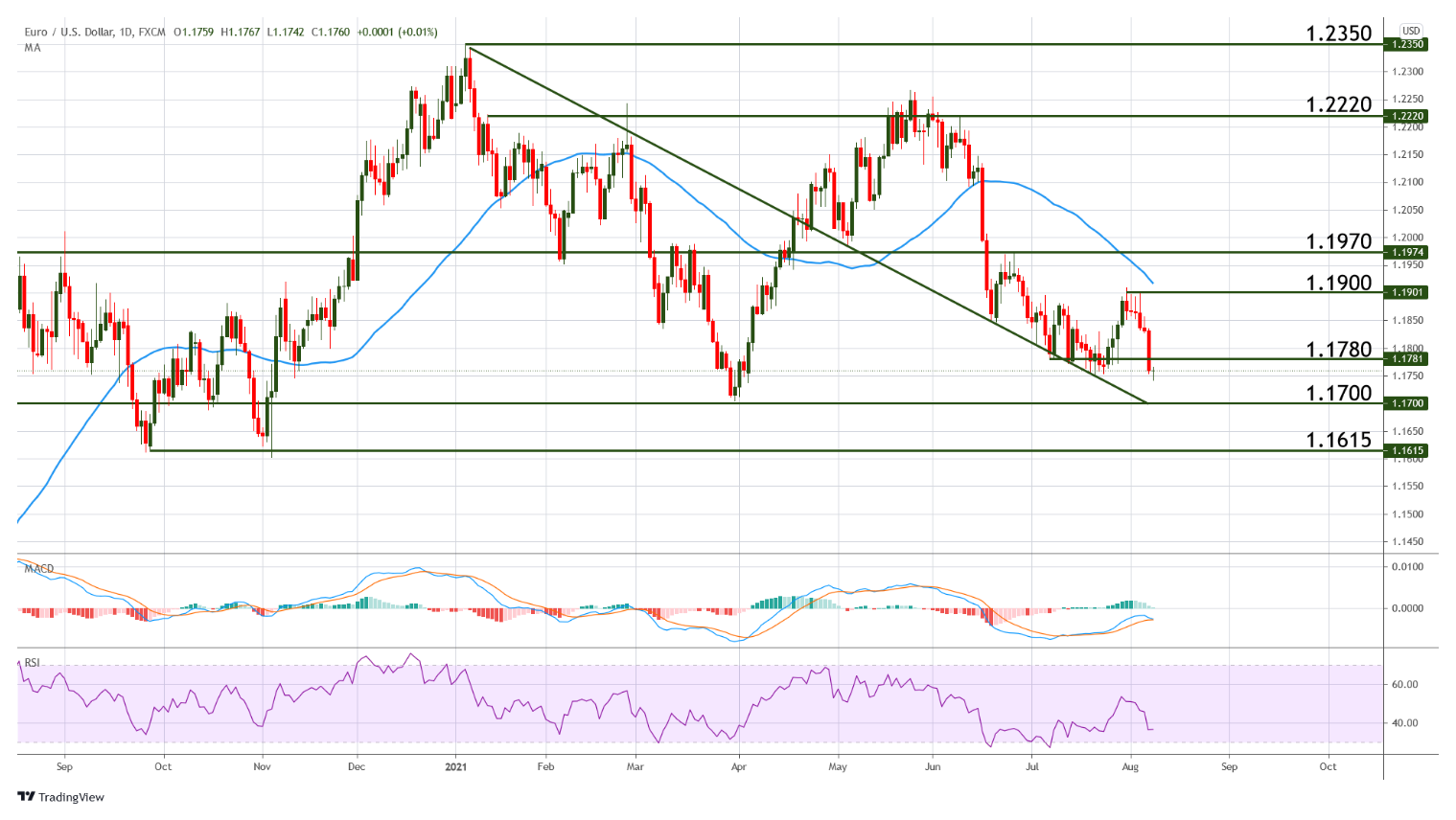The Dollar Outlook Is Bullish With Taper On Tap
Friday’s Payrolls Report Prepares the Dollar for Another Bullish Week
The greenback staged a massive comeback late last week, buoyed by the jobs data that surpassed analysts’ expectations. The Non-Farm Employment report showed that 943K new jobs were created during the previous month (forecast was 870K), while the Unemployment Rate dropped to 5.4% from the previous 5.9% and the Average Hourly Earnings showed a 0.4% change.
The series of green data was seen by many investors as a sign that the Fed may start to taper asset purchases this year, and that a rate hike may come as soon as 2022. It all translated into a strong US Dollar, which took the Euro almost 100 pips lower, below the recent support at 1.1780.
Key Events for the Week Ahead
The first release with some potential to move the pair is scheduled for Tuesday: the German ZEW Economic Sentiment. This is a survey of about 275 German institutional investors and analysts, which acts as an indicator of economic health. Its importance comes from the fact that the surveyed professionals are well informed about the economy due to the nature of their jobs, thus their opinions weigh more. The expected reading is 55.3, a drop from the previous 61.2, and the release time is 09:00 am GMT.
The more important release of the week is the U.S. Consumer Price Index, scheduled for Wednesday, August 11 at 12:30 pm GMT. The CPI is a gauge of inflation, thus the release will have interest rate implications. At the same time, the Core CPI will be released and usually, the FOMC pays more attention to this version because it excludes food and energy from the calculation. The expected CPI change is 0.5%, while the forecast for the Core CPI is 0.4%.
Technical Outlook – EUR/USD
The pair is currently trading around 1.1750, with an obvious bearish bias due to US Dollar strength. However, we still have to take into account the support zone between 1.1780 and 1.1750, which is still not broken and could generate a bounce higher.
As soon as this support zone is broken, the pair is likely to move into 1.1700 and to break the long-term bearish trend line seen on the Daily chart below. A more important support zone is located at 1.1615 – 1.1600 (double bottom) but unless surprises occur, the pair will not travel that far in a short while.
To the upside, the pair may encounter resistance at 1.1900 and the 50 days Moving Average, but unless the U.S. inflation shows some weird numbers, price is not likely to break that zone.
